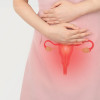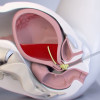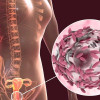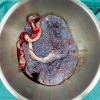
 IJCP Editorial Team
IJCP Editorial Team
Pregnancy and lactation may witness the occurrence of osteoporosis.
Pregnancy-associated osteoporosis (PAO) is a rare condition featuring skeletal fragility affecting women during pregnancy or postpartum. Normal pregnancy and lactation witness substantial changes in calcium metabolism and skeletal physiology to meet the demands of the developing fetus. Although these adaptations are reversible and generally pose no clinical significance to the mother, a cohort of women may develop osteoporosis and suffer fragility fractures.
Vertebral fractures are the commonest type of fracture in PAO and are often multiple. The rarity of PAO has prompted very few systematic studies to date. Its etiology remains unclear; however, traditional osteoporosis risk factors and genetic factors are conceived to play a role. A small number of cases may occur due to an underlying metabolic bone disorder or monogenic condition.
Managing PAO remains challenging due to a poor evidence base and the truth that spontaneous improvement in BMD is known to occur once pregnancy and lactation are complete.
Evidence exists on using Bisphosphonates, denosumab, and teriparatide in individual patients; however, the data supporting their use are currently limited. Thus more research is needed to improve the pregnancy and lactation journey.
Hardcastle SA. Pregnancy and Lactation Associated Osteoporosis. Calcif Tissue Int. 2022;110:531–545. https://doi.org/10.1007/s00223-021-00815-6

IJCP Editorial Team
Comprising seasoned professionals and experts from the medical field, the IJCP editorial team is dedicated to delivering timely and accurate content and thriving to provide attention-grabbing information for the readers. What sets them apart are their diverse expertise, spanning academia, research, and clinical practice, and their dedication to upholding the highest standards of quality and integrity. With a wealth of experience and a commitment to excellence, the IJCP editorial team strives to provide valuable perspectives, the latest trends, and in-depth analyses across various medical domains, all in a way that keeps you interested and engaged.





















Please login to comment on this article